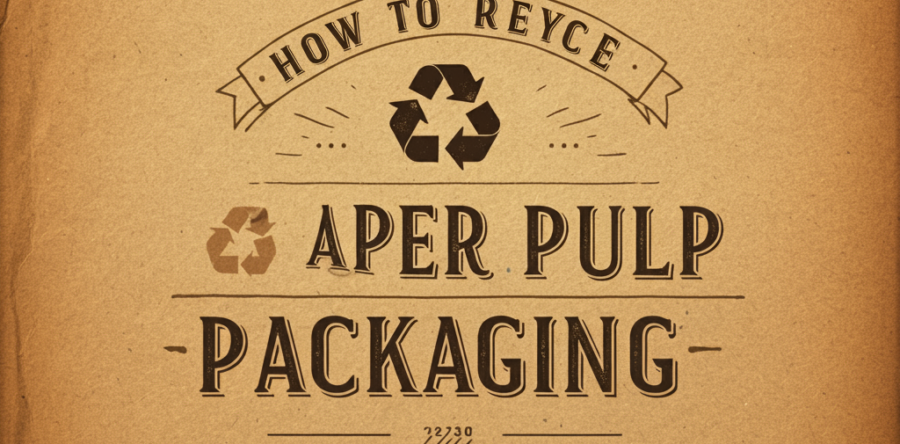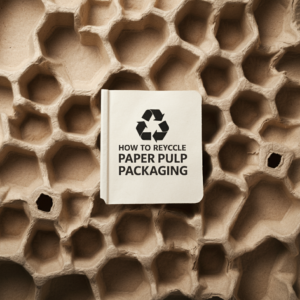How to Recycle Paper Pulp Packaging

We are at that time when the need for sustainability is on the rise. Everyone and businesses are on the lookout for effective ways to make a positive impact. Whether it's packaging from a recent online order or molded trays from fragile items, knowing how to recycle paper pulp keeps waste down and natural resources up.
Why Recycle Paper Pulp Packaging?
Paper pulp packaging, used for items like trays, wine shippers, and protective inserts, is made from recycled paper, making it one of the most sustainable packaging options. Unlike plastics, which take centuries to break down, paper pulp packaging is compostable and easily recyclable. By recycling it, you're giving it a second life—maybe as a book cover, cereal box, or even another piece of packaging. Plus, recycling it reduces landfill waste and saves energy that would otherwise go into creating new materials.
Identifying Recyclable Paper Pulp Packaging
Before tossing your packaging into the recycling bin, double-check that it's recyclable. Here are a few tips for sorting recyclable pulp from other materials:
- Plain, Uncoated Pulp: Most standard molded pulp packaging is recyclable, especially when it’s free of coatings, inks, or laminates.
- Avoid Waxed or Plastic-Lined Packaging: Some pulp packaging, especially for takeout food, may have wax or plastic linings. These items generally aren’t recyclable through curbside programs, so check with local facilities if you're unsure.
- Look for Recycling Symbols: Often, packaging will include a recycling symbol or mention it’s made from recycled materials. This is usually a green light for recycling!

Step-by-Step Guide to Recycling Paper Pulp Packaging
Here’s a quick breakdown to make sure your pulp packaging gets recycled properly:
1. Remove any Non-Paper Materials
Tape, plastic wraps, and labels aren’t usually recyclable, so peel off any extras before tossing the packaging in the bin. This helps keep the recycling stream clean and efficient.
2. Check Local Recycling Rules
Recycling programs differ. Some areas accept paper pulp in curbside bins, while others may require it to be taken to a drop-off location. Check with your local waste management to avoid any surprises.
3. Flatten or Tear Large Pieces
Crushing or tearing large pieces of paper pulp helps with efficient recycling. It takes up less space in bins and makes processing easier on the recycling end.
4. Composting Option
If recycling isn’t available in your area, composting is a great alternative! Paper pulp packaging is biodegradable, which will break down naturally in a compost pile. Just break it into smaller pieces, add to the compost, and let nature do its thing.
How Recycling Paper Pulp Packaging Helps the Environment
Let’s be real—one person recycling doesn’t change the world overnight, but small actions add up. Recycling pulp packaging keeps paper products in circulation longer, which helps reduce the demand for new raw materials and cuts down on deforestation. Not only that, recycling reduces energy and water consumption in the production process, which is a huge environmental win.
Recycling Makes a Difference
Recycling paper pulp packaging is a small effort with a big payoff. By tossing it in the right bin or compost pile, you’re keeping the cycle going, reducing waste, and helping create a more sustainable future.
If you’re looking for molded pulp products that are ready to ship, visit our eCommerce partner at www.wineshippingboxes.com. You’ll find eco-friendly options that make shipping your products easy and worry-free.
Let’s keep those recycling bins full, and those landfills a little lighter!
